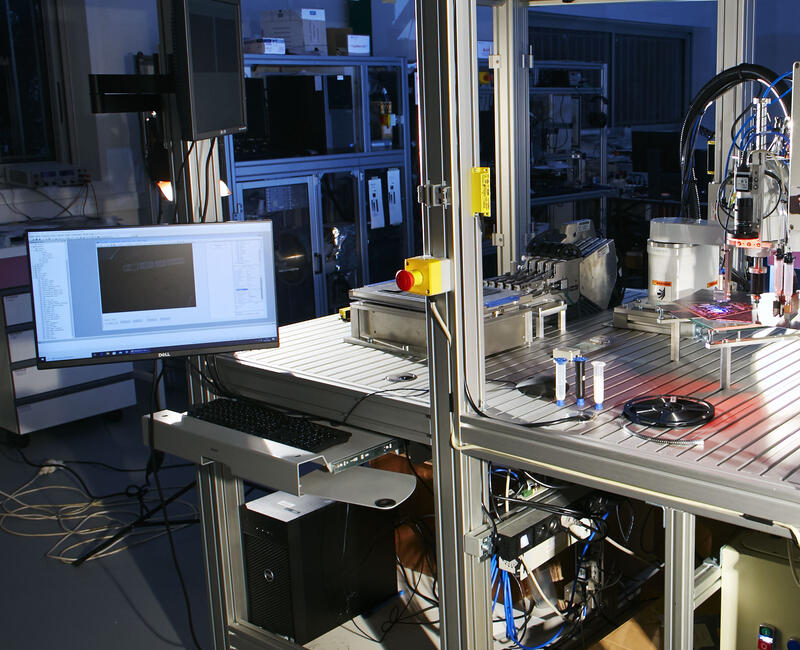
PAPRIKA: the four-axis robot
High-precision hybrid paper electronics
- Handle electronic components
- Apply electronic components in-line
- Implement hybrid paper electronics
- Validate rapidly-repeated high-precision tasks
The little story of the pilot
Hybrid printed electronics is a bridge between two industrial fields: printing, and traditional electronics. Components that perform individual functions are still drawn from traditional electronics, since these are high-performance and mass-produced.
The robot is a valuable asset in terms of maintaining the production rates used in the printing world, because it combines precise movements and speed. In addition, being light and compact, this type of robot can be fitted seamlessly into a printing line to carry out the transfer of electronic components.
You can use PAPRIKA to validate hybrid paper electronics concepts and component transfer. This robot is fitted within its shell and operates off-line in total autonomy.
Characteristics
The design of the four-axis robot can be compared to an arm, shoulder, elbow and wrist. A degree of freedom to move along the Z-axis is also available. This robot is hence limited in the horizontal plane, but can operate in a host of planes along the Z-axis.
SCARA robot parameters
- Speed J1 (arm): 6.8 m/s
- Speed J2 (forearm): 6.8 m/s
- Speed J3 (Z-axis movement): 1.1 m/s
- Speed J4 (rotation motion): 2.0 °/s
- Volume of lab cell: width 1.3 m, length 1.75 m, height 1.8 m
- Weight of robot alone: 17 kg
- Work volume: 200 mm high
- Work envelope: 600 mm radius
- Fixed camera: 20 Mpx
- Built-in camera: 20 Mpx
Available features
- LED pick and place, resistors, micro-labels, etc.
- Localised application/injection: varnish, glue, ink, etc.
- Local or large-surface encapsulation.
